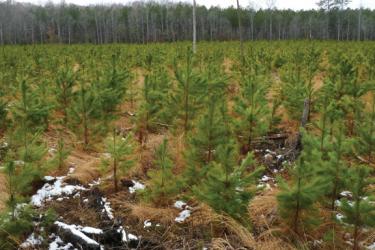How Old Is Your Forest?
A healthy forest is a mixed-up place: a mix of species, plant layers and types, and ages. Woods with a blend of young, middle-aged and old trees are less susceptible to insect attacks, disease and damage from natural disasters.
So how can you tell how old your trees are? The way we most often hear about is through tree rings: count the rings and you’ll get the tree’s age. But that method is not always 100 percent accurate, and it’s not always possible without cutting down your tree.
Thankfully, there are other ways to figure out how old your trees are. You can make a fairly good estimate with a simple formula that involves measuring the tree and then multiplying the measurement by the growth factor for that tree’s species (because different kinds of trees grow at different rates).
First, start by measuring the tree Diameter at Breast Height (DBH)—that’s the diameter of the tree in inches at 4.5 feet above the ground.
Measure the circumference of the tree at that height with a tape measure, and then divide the circumference by 3.14. The result is your DBH.
CBH ÷ 3.14 = DBH
Now multiply the DBH by the growth factor for your tree’s species. You’ll find a list of common growth factors here. The result is the tree’s age.
DBH × growth factor = age
If you apply this formula to a sample of your trees, you’ll start to get a sense of the mix of ages in your woods. The more diversity you have, the better—a mix of ages means your woods are a vibrant, healthy place where new life is starting out and established trees are maturing. Death and renewal play vital roles in keeping your woods healthy.
Find out More
For help assessing and supporting the health of your woods, consult with
*contains information adapted from the Project Learning Tree Secondary Grades 9-12 Module Focus on Forests
How can I get more tips?
It’s simple! Enter your email below.

